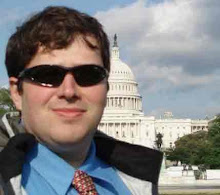It has taken the nation a long time to get to the point we are today dealing with alternative energies. Although available for a number of years, only now has “alternative energy” become a topic that both political parties are rallying towards. Imagine how much more the push will be towards alternative energies in ten years, when the price of oil has doubled, and American’s home energy bills are soaring. Imagine every state taking advantage of wind and solar potential, constructing turbines and panels along farms and sky scrapers alike. Now imagine, despite all this production, rolling brownouts and blackouts in far removed areas, because we can’t get energy from where it is produced to where it is consumed. This is our likely future if the federal government doesn’t take swift action to address the rapidly ageing electrical grid, according to this article in the New York Times.
When the builders of the Maple Ridge Wind farm spent $320 million to put nearly 200 wind turbines in upstate New York, the idea was to get paid for producing electricity. But at times, regional electric lines have been so congested that Maple Ridge has been forced to shut down even with a brisk wind blowing.
Even today, progressive instillation of wind energy in Western and Central New York is being slowed by an antiquated electric grid. (And by the way, another point demonstrating how major this business is to the region, $320 million, yikes!).
I attended a seminar on the use of metaphors in explaining science to the public by Julia Mead last night, and this is an example of one used in the article, that I think is pretty solid (even if it is only a simile):
The grid today, according to experts, is a system conceived 100 years ago to let utilities prop each other up, reducing blackouts and sharing power in small regions. It resembles a network of streets, avenues and country roads.
“We need an interstate transmission superhighway system,” said Suedeen G. Kelly, a member of the Federal Energy Regulatory Commission.
In short, the current system of electric grids is managed on the state level, and are often constructed with little to no interstate transmission of energy in mind. In the future, if we are to take advantage of the great solar potential in the desert Southwest or the great wind potential in the Great Plains, we will need a modern transmission system. In fact at present, our transmission system is limiting our ability to utilize this potential.
The grid’s limitations are putting a damper on such projects already. Gabriel Alonso, chief development officer of Horizon Wind Energy, the company that operates Maple Ridge, said that in parts of Wyoming, a turbine could make 50 percent more electricity than the identical model built in New York or Texas.
“The windiest sites have not been built, because there is no way to move that electricity from there to the load centers,” he said.
I’ll keep today’s post short and sweet, and conclude that an additional concern in the development of alternative energies is that we need a modern electricity transmission system or power grid developed before wide scale utilization of alternative energies is practical. An additional conclusion to be drawn from this point is that generation of energy from alternative sources in New York City is not only a trendy thing to do, but it’s a practical or almost perhaps necessary. Locally produced energy reduces the demand on the grid, and reduces the amount of energy that is wasted during its transmission.




1 comment:
You should talk to Joe sometime about the SmartGrid.
Post a Comment